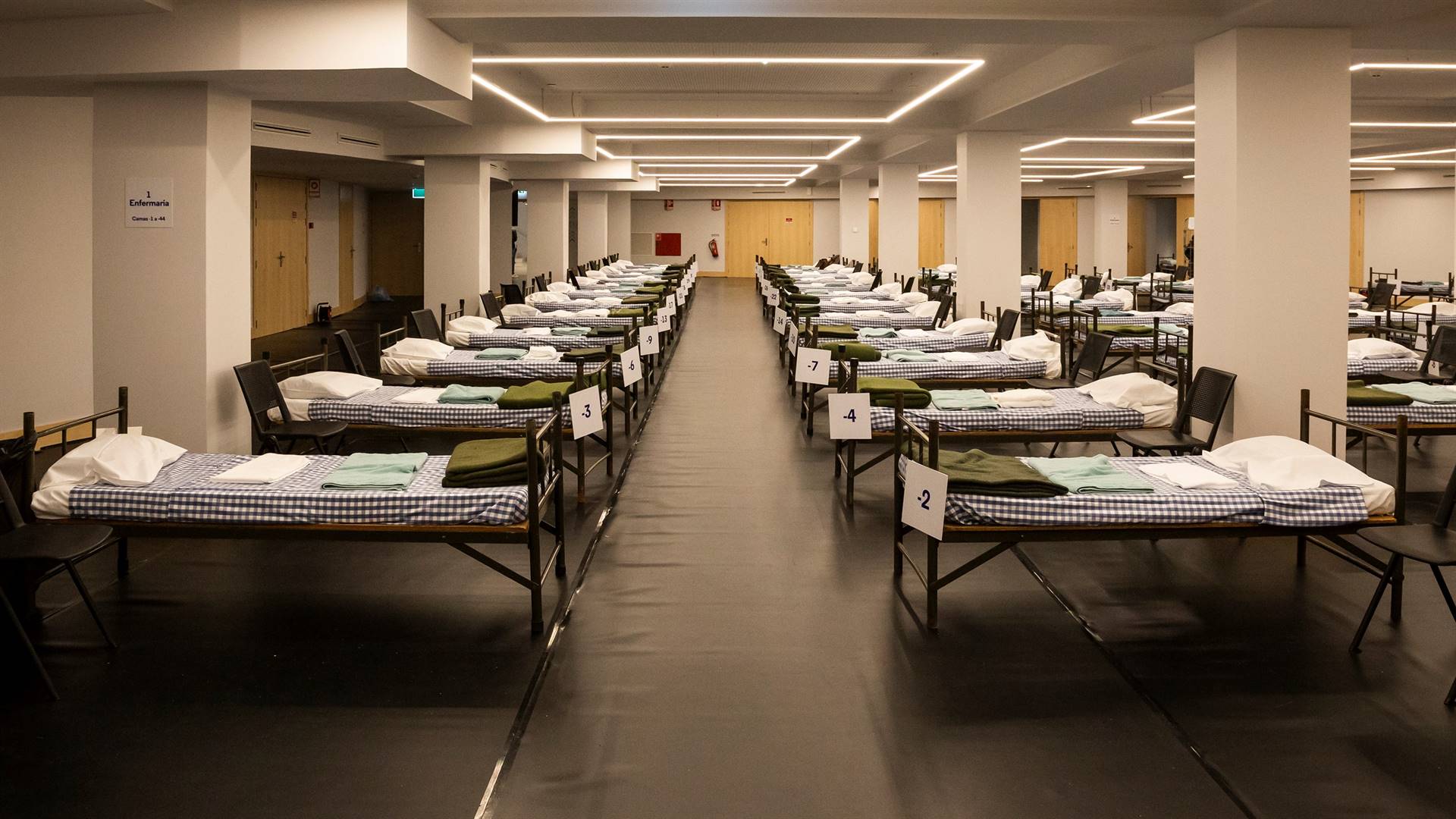
The national lockdown, which has now been extended to five weeks, has postponed South Africa’s “worst-case” Covid-19 scenario to September, according to government.
Peak coronavirus infections would have occurred in July if the lockdown had not been implemented, which would have coincided with the height of the annual flu season.
Hence the number of healthcare workers, hospital beds and respiratory support devices needs to be increased at every level of the patient care continuum in order to cater for the anticipated increase in patients needing respiratory support during the anticipated height of the Covid-19 pandemic in South Africa in September.
According to department of health’s acting director-general Anban Pillay, the country has less than half the number of ventilators needed to deal with peak infections. Public and private hospitals currently have 3 216 ventilators, compared to the 7 000 needed. In addition, the country has 4 909 critical care hospital beds currently available. However, the need for intensive care unit (ICU) beds could exceed 14 700 at the highest level of infection.
Internationally, about 90% of patients recover without any respiratory support, while 6% to 10% of patients need respirators. In South Africa, this may be higher due to the numbers of patients already affected by HIV, TB and lifestyle diseases.
The international norms for the provision of these devices in health facilities have been applied in South Africa, as in the UK, the EU, the US and China.
South Africa has sufficient hospital beds to serve the normal patient case load when private and public beds are pooled.
READ: ‘Hunger will kill us, not corona’
However, this could change dramatically during the anticipated peak of the Covid-19 pandemic. Hence government’s emergency response has focused on slowing the pace of infections to reduce the peak patient loads needing respirators, protecting healthcare workers, increasing the number of healthcare workers, increasing the number of healthcare beds, increasing the number of respiratory-support devices and patient care.
Government says only “severe to critical” Covid-19 patients will be treated at hospitals, while “mild to moderately infected” patients will be accommodated at field hospitals where basic medical care will be provided.
If a patient is struggling to breathe, paramedics may use oxygen and/or Ambu-bag during patient transport. The Ambu-bag is a manual device used to pump air into the patient’s lungs. This inflates the lungs to increase the surface area available for oxygen to cross from the lungs into the bloodstream.
The patient is triaged at the hospital, which is a rapid assessment and decision on immediate treatment, ideally including a chest X-ray. About two thirds of patients needing respiratory support will improve with non-invasive respiratory support.
Some patients require 20% to 100% oxygen delivered via low-flow nasal cannula for a short time. Oxygen is delivered from an oxygen cylinder or outlet from the centralised hospital supply system via the gas blender (oxygen meter) to the nasal cannula, or a mask or non-rebreather. Medical staff use the gas blender to control the oxygen concentration supplied to the patient.
In a resource constrained environment, some patients could receive 20% to 100% oxygen delivered via a high-flow nasal cannula, though this isn’t recommended for Covid-19 patients due to cross-infection risks.
Most patients require continuous positive airway pressure treatment. Continuous positive airway pressure equipment uses a hose and mask or hood to deliver constant and steady air pressure.
Stand-alone devices are used commonly at home to manage sleep apnea, and in neonatal units.
READ: Inside the hospital of death: St Augustine’s battles Covid-19
However, large-scale solutions will be more suitable for the expected peak patient load. Oxygen and humidity can be introduced into the air supply, as warmed, humidified and oxygenated air is easier for the patient and aids in recovery. Oxygen supply is important in the treatment of Covid-19 patients.
A few patients may benefit from bi-level positive airway pressure treatment. Similar to a continuous positive airway pressure machine, a bi-level positive airway pressure machine is a non-invasive form of therapy delivering pressurised air through a mask to the patient’s airway.
The main difference is that bi-level positive airway pressure machines have two pressure settings: the prescribed pressure for inhalation, and a lower pressure for exhalation. The dual settings allow the patient to get more air in and out of their lungs. However, continuous positive airway pressure may be more effective than bi-level positive airway pressure for Covid-19 patients.
Some patients need to be treated with pronation plus high-flow nasal cannula or continuous positive airway pressure, whereby the patient is awake and lying face-down on their front. All of these treatments rely on pressure control so that the patient’s lungs don’t over- or under-inflate.
Critically-ill patients may require invasive respiratory support, which involves inserting a tube through the mouth (an endotracheal tube) or neck (a tracheostomy tube), connected to a ventilator to deliver oxygen to the lungs. This is a specialist procedure carried out by accredited ICU staff.
READ: The family that locks down together stays together
The ICU ventilator is a high-tech device providing greater control of a wide variety of ventilation parameters, and usually displays graphics to provide visual feedback of each breath. A respiratory specialist will optimise ventilation management, adjustment and weaning.
Covid-19 patients could remain on invasive respiratory support for three to six weeks. Weaning off the ventilator means that the patient moves down the patient-care continuum, perhaps using some of the other devices or reverse of the therapies described above.
Hence the immediate government focus is on importing any available stock of Ambu-bags, low-flow nasal cannula, continuous positive airway pressure equipment, ICU ventilators, oxygen concentrators and the entire range of oxygen-enrichment devices.
In addition, the following will need to be stockpiled: Suitable patient interfaces (such as masks and hoods), spare parts for these devices and consumables (tubes, connectors, filters, valves and cannula).
Another focus area is repairing existing devices and upgrading hospital facilities to allow many more patients to use respiratory devices. An option is the local manufacture of commonly-used designs on licence or open-source, whereby clinical experts have attested to the use of such equipment in meeting the necessary requirements.
Kate Roper is client director for health and education at Aurecon (currently rebranding as Zutari). Design and advisory company Aurecon is also providing advisory support to government about the provision of temporary facilities
 | ||||||||||||||||||||||||||
Get in touchCity Press | ||||||||||||||||||||||||||
| ||||||||||||||||||||||||||
| Rise above the clutter | Choose your news | City Press in your inbox | ||||||||||||||||||||||||||
| City Press is an agenda-setting South African news brand that publishes across platforms. Its flagship print edition is distributed on a Sunday. |




 Publications
Publications
 Partners
Partners









